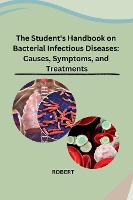The importance of studying bacterial infectious diseases cannot be overstated, especially for students interested in the field of infectious diseases. Bacterial infections have been a significant threat to human health throughout history, and understanding these diseases is crucial for their prevention, diagnosis, and treatment.One of the primary reasons for studying bacterial infectious diseases is the potential public health impact. Bacteria can cause a wide range of infections, from mild illnesses to life-threatening conditions. By studying these diseases, students can learn about the various bacteria responsible for infections and the mechanisms by which they spread. This knowledge is essential for developing effective public health strategies, such as vaccination programs, hygiene practices, and infection control measures.Moreover, studying bacterial infectious diseases helps students understand the symptoms and clinical manifestations associated with these infections. Recognizing the signs of bacterial infections is vital for early diagnosis and appropriate treatment. This knowledge can save lives and prevent the progression of diseases to severe stages.In addition, learning about bacterial infectious diseases provides students with an understanding of antibiotic resistance. Overuse and misuse of antibiotics have led to the emergence of drug-resistant bacteria, posing a significant global health challenge. By studying these diseases, students can gain insights into the factors contributing to antibiotic resistance and their implications for treatment. This knowledge is crucial in promoting responsible antibiotic use and developing alternative treatment strategies.Furthermore, studying bacterial infectious diseases allows students to explore the latest advancements in diagnostic techniques and treatment options. The field of infectious diseases is rapidly evolving, with new technologies and therapies being developed. By staying updated with these advancements, students can contribute to the field and help improve patient outcomes.Lastly, studying bacterial infectious diseases offers exciting career opportunities. With a solid understanding of these diseases, students can pursue careers as clinical microbiologists, epidemiologists, infectious disease specialists, or public health professionals. The demand for experts in this field is high, making it a rewarding and fulfilling career path.

